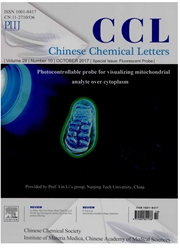

 中文摘要:
中文摘要:
有 ceria 的公司的相互作用 Au 的 sintering 行为上的薄电影和它的影响被扫描通道显微镜学(STM ) 调查,同步加速器放射光致核裂变光谱学(SRPES ) 和 X 光检查光电子光谱学(XPS ) 。在公司和 CeO 2(111) 之间的强壮的相互作用在 300 点导致公司的氧化到公司 2+? K,在低公司报道由 ceria 表面的部分减小伴随了。在公司 2+ 离子传播进 CeO 2 的退火到高温度导致的金属性的公司的增加的部分的随后的公司免职结果拍摄,当小金属性的公司岛聚结进更大的时。二金属的 Co-Au 粒子被 Au 的免职在 ceria 表面上在存在公司粒子上准备。Co-Au 二金属的表面的 sintering 行为被发现被 ceria 支持的 stoichiometry 高度决定。到 Au/CeO 2 表面的公司的增加与纯 Au 粒子的比较在高温度压制 Au 粒子的 sintering。然而, Au 粒子比在 CeO 1.82 表面上在 Co/CeO 1.82 层上是不太稳定的。
 英文摘要:
英文摘要:
The interaction of Co with ceria thin films and its influence on the sintering behavior of Au were investigated by scanning tunneling microscopy(STM), synchrotron radiation photoemission spectroscopy(SRPES) and X-ray photoelectron spectroscopy(XPS). The strong interaction between Co and CeO_2(111) leads to oxidation of Co to Co~(2+) at 300 K, accompanied by partial reduction of ceria surface at low Co coverages. Subsequent Co deposition results in an increasing fraction of metallic Co. Annealing to high temperatures induces Co~(2+)ions diffuse into the CeO_2 film, while the small metallic Co islands agglomerate into larger ones. The bimetallic Co–Au particles were prepared by deposition of Au on the existing Co particles on ceria surfaces. The sintering behavior of Co–Au bimetallic surfaces is found to be highly determined by the stoichiometry of ceria supports. The addition of Co to the Au/CeO_2 surface suppresses the sintering of Au particles at high temperatures in comparison with that of pure Au particles. However, Au particles are less stable on the Co/CeO_(1.82) layer than on CeO_(1.82) surface.
 同期刊论文项目
同期刊论文项目
 同项目期刊论文
同项目期刊论文
 期刊信息
期刊信息
